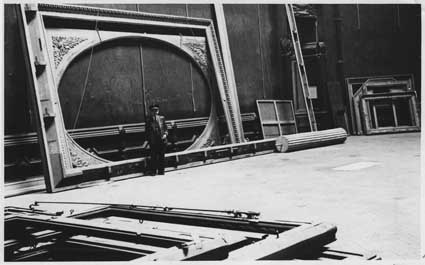|
Reviews of Recent Independent, Foreign, & Documentary Films in Theaters and DVD/Home Video
Written, Produced & Directed by: Richard Berge, Nicole Newnham & Bonni Cohen, based on the book The Rape of Europa by Lynn H. Nicholas Director of Photography: Jon Shenk. Edited by: Josh Peterson. Music by: Marco d’Ambrosio. Released by: Menemsha Films. Country of Origin: USA. 117 min. Not Rated. Narrated by: Joan Allen.
The filmmakers mostly focus, though, on the big picture: the familiar psychological background of Hitler as an art-school reject-turned-anti-Semite; the premeditated thefts by his regime; the destruction of art and architecture deemed degenerate/inferior (thousands of Polish works have vanished); the seizing of the property and possessions of Parisian Jews; the war of annihilation on the Eastern Front; the Allies’ quandary in Italy, to defeat the Nazis while respecting the artistic monuments; and the aftermath, litigious and otherwise. There’s more than enough material for several films – the destruction of the medieval Benedictine monastery Monte Cassino or the work of the Allied art recoverers, the Monument Men, to name two. The talking-head interviews of art historians (including Lynn H. Nichol, whose 1995 book is the basis for the film) seamlessly connect the interrelated segments. Even if much of the information may be familiar, the consistently well-paced film flows, never exhausting but engaging.
Undoubtedly, a lot was left out of Nichol’s weighty volume, but one advantage the film has is the footage of the art itself and the incredible
archival photos. Given what was lost, the doc poignantly offers snapshots of a vanished Europe.
Kent Turner
|

